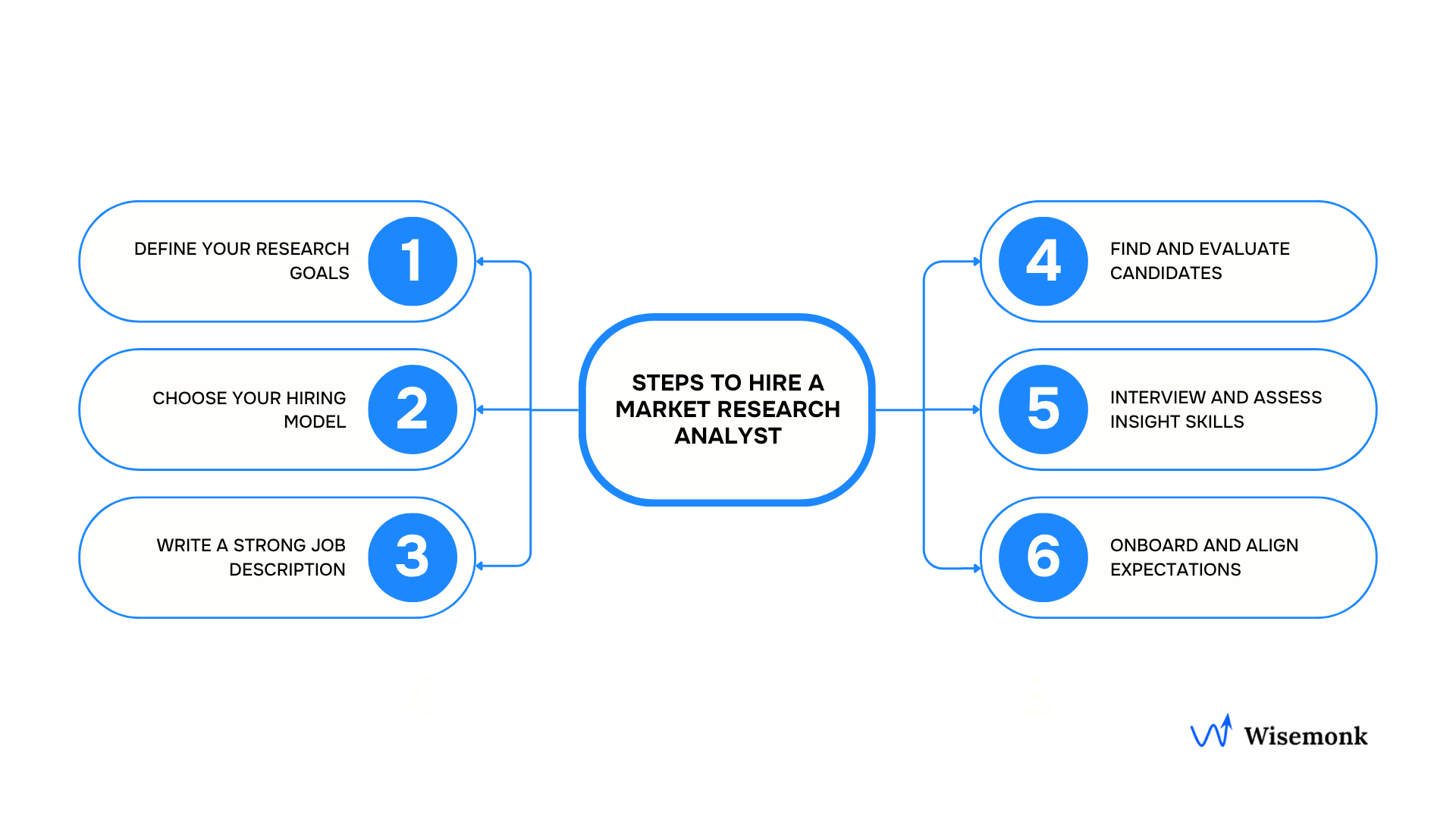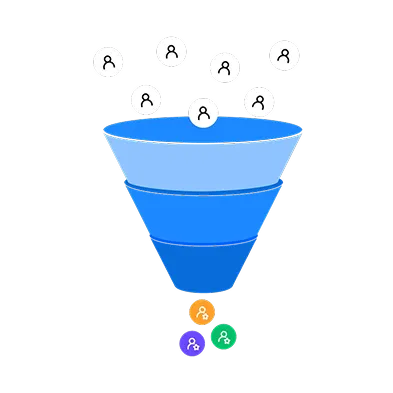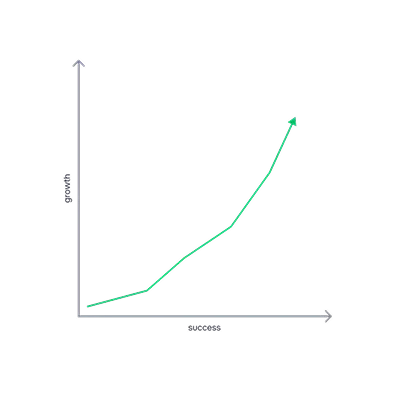If you’ve ever wondered how to find the right market research analyst or what it really takes to hire one, this guide is for you. We’ve created a practical, step-by-step resource to help global companies understand the entire hiring process, from defining research goals to evaluating performance. Whether you’re hiring your first analyst or building a global insights team, this guide will help you make confident, data-driven hiring decisions.
Why hire a market research analyst?[toc=Why Hire Market Analyst]
If your business decisions rely more on intuition than real data, it’s time to bring in a market research analyst. They turn raw information into actionable insights that guide everything from pricing to positioning and expansion.
A good analyst helps you understand consumer behavior, identify target markets, and track industry trends so your strategy isn’t based on guesswork. They bridge the gap between what customers want and how your company delivers it.
From our experience helping global businesses hire top research talent, most companies realize they need an analyst when:
- Campaigns aren’t backed by solid market data.
- Competitor moves seem unpredictable.
- Customer insights feel outdated or unclear.
- Expansion plans lack validated market potential.
For global teams, market research analysts are even more valuable. They analyze cross-country consumer insights, assess market conditions, and localize strategies to fit diverse audiences.
What does a market research analyst actually do?[toc=Role Breakdown]
A market research analyst is the bridge between data and decisions. They dig into customer behavior, market trends, and competitor moves to help businesses make informed, confident choices.
Here’s what a typical market research analyst does:
- Design surveys and collect data to understand customer preferences and purchase intent.
- Analyze data from multiple sources using tools like Excel, Power BI, Tableau, Google Analytics, or SPSS.
- Study competitors to benchmark performance, pricing, and positioning.
- Forecast demand and identify new opportunities using historical and predictive data.
- Present insights clearly through reports and visual dashboards that guide marketing and business strategies.
They often collaborate with marketing, product, and leadership teams to align insights with broader business objectives. Their findings influence marketing strategies, product launches, and customer experience improvements.
It’s also important to know the difference between related roles:
- A market research analyst focuses on customer and market insights.
- A marketing analyst looks at campaign performance and digital channels.
- A data analyst deals with broader datasets beyond marketing or sales.
In short, a market research analyst doesn’t just collect data; they uncover the story behind it. Their insights help companies stay aligned with market realities and ahead of competitors.
What skills should you look for in a market research analyst?[toc=Essential Skills]
Hiring the right market research analyst comes down to finding someone who can not only crunch numbers but also tell the story behind them. The best analysts combine technical skills with strategic thinking and clear communication.
Here are the key skills to look for:
1. Technical Skills
- Data collection, cleaning, and statistical analysis.
- Proficiency with tools like Excel, SPSS, Power BI, Tableau, and Google Analytics.
- Knowledge of survey design, sampling techniques, and research methodologies.
2. Analytical Thinking
- Ability to recognize patterns, segment audiences, and forecast market trends.
- Strong problem-solving and critical thinking skills.
- Turning raw data into actionable insights that guide decision-making.
3. Communication and Storytelling
- Presenting findings in a clear, business-friendly way.
- Writing concise, impactful reports that influence stakeholders.
- Collaborating with marketing, sales, and product teams to translate insights into action.
4. Business and Global Awareness
- Understanding of market conditions, consumer behavior, and business dynamics.
- Familiarity with cross-cultural research and multilingual data interpretation for global companies.
A great analyst doesn’t just interpret numbers. They connect the dots between data, markets, and strategy to help businesses grow confidently.
How to hire a market research analyst?[toc=How to Hire]
Hiring a market research analyst is about finding someone who can turn data into strategy. Whether you’re hiring locally or building a global team, following a structured process helps you identify the right fit and avoid costly hiring mistakes.
Here’s how to do it the right way:

Step 1: Define Your Research Goals
Before you start hiring, clarify what you expect from your analyst.
Ask yourself:
- Are you trying to understand new market trends or measure customer satisfaction?
- Do you need competitive analysis, pricing studies, or consumer segmentation?
Define your business problem clearly. The sharper your goals, the easier it will be to identify analysts with the right expertise.
Also decide the scope:
- One-time market research project or ongoing support?
- Global insights or focus on a specific region or sector?
Step 2: Choose Your Hiring Model
Your hiring model depends on your budget, project duration, and team structure.
Here are the most common options:
- Full-time analyst: Ideal for growing companies that need continuous research.
- Contract or freelance analysts: Best for project-based assignments or smaller companies testing new markets.
- Agency or consultancy: Great for specialized studies requiring large datasets or cross-industry expertise.
Global companies often partner with an Employer of Record (EOR) to compliantly hire full-time or contract analysts without setting up a local entity.
Step 3: Write a Strong Job Description
A clear and detailed job description attracts qualified candidates and filters out the wrong ones.
Include these key elements:
- Role summary: Explain how this analyst will drive insights and support data-backed decisions.
- Responsibilities: Data collection, survey design, competitive analysis, forecasting, and insight reporting.
- Required tools: Excel, SPSS, Tableau, Power BI, and Google Analytics.
- Performance indicators: Accuracy of insights, timeliness of reports, and business impact of recommendations.
- Soft skills: Critical thinking, communication, and the ability to translate data into action.
Step 4: Find and Evaluate Candidates
You can find market research analysts across several trusted channels:
- LinkedIn or Indeed: Best for experienced professionals and verified profiles.
- Specialized research networks: Look into communities like GreenBook or ResearchGate.
- Freelance platforms: Sites like Upwork or Toptal are great for short-term or project-based hires.
- Referrals: Tap your existing marketing or data analytics network for trusted recommendations.
When reviewing candidates:
- Check their portfolio or past research reports for structure, accuracy, and insight clarity.
- Look for experience in your industry or target market.
- Verify tool proficiency with quick data interpretation exercises.
Step 5: Interview and Assess Insight Skills
Use interviews to see how well candidates think, not just what they know.
Ask questions like:
- “How would you structure research for a new market entry?”
- “Can you walk me through a data-driven recommendation you’ve made?”
- “What’s your process for turning survey data into strategic insights?”
Look for clarity, logical thinking, and the ability to communicate findings in plain language.
Step 6: Onboard and Align Expectations
Once you’ve found your analyst, make onboarding smooth and structured.
- Set up access to tools, datasets, and reporting dashboards.
- Define timelines for research deliverables and presentations.
- Agree on a regular reporting cadence, weekly, monthly, or quarterly.
- Discuss how success will be measured (accuracy, insight depth, and business impact).
The most efficient way to onboard and pay them compliantly is through an Employer of Record (EOR) like Wisemonk. It handles payroll, contracts, and taxes, so you can focus entirely on research outcomes, not admin.
How much does it cost to hire a market research analyst?[toc=Cost to Hire]
Hiring a market research analyst is an investment in clarity and smarter business decisions. The cost depends on experience, location, and the type of research you need, from consumer studies to market entry analysis.
Here’s a look at average salary and rate benchmarks for 2025:
Key factors influencing cost:
- Experience and specialization: Analysts with experience in specific sectors like fintech, healthcare, or consumer goods often charge higher rates.
- Type of project: A one-time market research project costs less than a full-time role focused on ongoing analysis.
- Tools and methodology: Advanced analytics tools (SPSS, Tableau, Power BI) or complex statistical modeling increase project scope and cost.
- Data sources: Access to premium databases or surveys adds to project expenses.
- Geographic market: Rates differ based on where your analyst is located and the cost of living in that region.
Remember, cost should never outweigh value. A skilled market research analyst can save your business months of misaligned campaigns or product decisions by turning data into actionable insights.
How to manage and measure performance?[toc=Manage Performance]
Hiring a market research analyst is only valuable when their work translates into real business results. Managing them effectively means setting clear expectations, measurable KPIs, and giving them access to the right tools and collaboration channels.
Here’s how to manage and measure their performance effectively:
1. Set Clear KPIs from the Start
Define what success looks like for your analyst. Common KPIs include:
- Accuracy and depth of research reports
- Actionability of insights delivered
- Timeliness of project completion
- Impact on business decisions or marketing strategies
2. Establish a Regular Reporting Cadence
Schedule weekly or monthly updates where analysts share key findings, trends, and actionable takeaways. Encourage visual dashboards and summaries so insights are easy for teams to interpret.
3. Promote Cross-Functional Collaboration
Your analyst should work closely with marketing, sales, and product teams. Insights are only valuable when they influence real action, so alignment with decision-makers is essential.
4. Use the Right Tools for Tracking
Adopt platforms like Tableau, Power BI, or Google Data Studio to track performance and create transparent dashboards. Combine these with collaboration tools like Slack or Notion for smooth communication.
5. Encourage Continuous Learning
Markets evolve fast. Provide access to industry publications, data tools, and analytics training to help analysts stay ahead of trends and refine their skills.
6. Review Performance Quarterly
Assess whether insights are shaping strategy or improving decision-making. Recognize impactful work, discuss improvement areas, and recalibrate research priorities if needed.
A well-managed market research analyst doesn’t just produce reports, they deliver clarity that drives confident business moves.
What mistakes should you avoid when hiring or managing analysts?[toc=Hiring Mistakes]
Hiring the right market research analyst can help your business make smarter, data-backed decisions, but rushing the process or skipping key steps can lead to wasted time and poor insights.
Based on our experience helping global companies hire expert market research analysts, here are the most common mistakes to avoid:
- Not Defining Clear Research Objectives: Without well-defined goals, even the best analyst can get lost in data. Start with specific questions like “Who is our target market?” or “What are our top competitors doing differently?” Clear objectives lead to actionable insights.
- Confusing Data Collection with Insight Generation: Collecting large volumes of data doesn’t guarantee value. A skilled analyst doesn’t just gather statistics, they interpret them to tell a story. Always look for candidates who can translate complex data into clear business recommendations.
- Overlooking Tool Proficiency: Modern market research analysts rely on platforms like SPSS, Tableau, Power BI, and Google Analytics. Hiring someone without technical fluency in these tools often leads to inconsistent or outdated analysis.
- Ignoring Communication Skills: Even the most accurate report is useless if no one can understand it. A strong analyst explains insights in plain language and connects findings directly to business needs and marketing strategies.
- Hiring Without Checking Industry Expertise: Each sector, from finance to consumer goods has its own dynamics. Analysts familiar with your industry developments, competitors, and market conditions can deliver more targeted, relevant results.
- Poor Collaboration or Feedback Loops: Treating analysts as siloed data workers limits their impact. Encourage regular collaboration with your marketing, sales, and leadership teams to ensure findings are applied across departments.
Avoiding these hiring mistakes helps you engage qualified candidates, generate actionable insights, and ensure your research aligns perfectly with your business strategy.
Conclusion
Hiring a market research analyst gives your business a real edge by turning complex data into clear direction. The right analyst helps you understand your customers, identify market opportunities, and make decisions backed by insight instead of assumptions. Whether you hire locally or build a distributed research team, focus on clear goals, communication, and compliance. If you want to simplify global hiring, Wisemonk can help you hire, pay, and manage market research analysts anywhere in the world without setting up a local entity.
Ready to hire market research analyst? Contact us today to discuss your hiring needs!







































